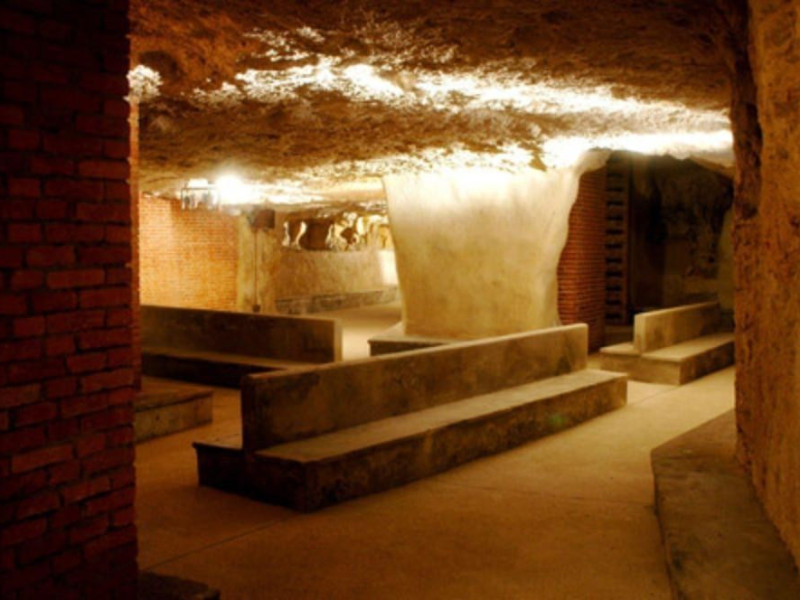Percorso Ipogeico di Piazza del Duomo
The underground of Piazza Duomo is an underground route connecting east-west the cathedral square to the walls of the Navy, which is divided into a main gallery, from which radiate some smaller galleries, one of which is joined to the big cistern of the Archbishop's Palace. Built by Bishop Paul Pharaoh (1619-1629), the tank had an essential role not only for the water supply of the Archbishop's Palace, but for the entire Ortigia. Along the way it can see the remains of other ancient wells or cisterns, intercepted and destroyed during the excavation of the tunnels. A first group of galleries is linked to the presence of a previous quarry located in Piazza Duomo and remembered in the eighteenth century, since it had been dealing with the stone for the construction of the facade of the Cathedral. The access point was identified in 1869, during the construction of some public works. The Second World War brought the attention on the underground rooms identified in the previous century: in view of the entry into the war, it was made available for the citizens, by the Committee of UMPA (Union Military Air Defense), a collection of points in case of attack. In order to prepare the bomb shelter of Piazza Duomo, were called a team of "pirriatori", tasked with expanding the old quarry, dig a room where to keep in boxes zinc the simulacrum of Saint Lucia, hidden since December 1942 with the treasure, and arrange access for the population located in the retaining wall of the Archbishop's Garden with an additional entrance to the galleries in the ancient wall of the Navy. It was therefore created an underground route that connected the cathedral square to the Navy joint through a secondary tunnel in a north-south, to the tank. After the War, he proceeded to the disposal of the shelters. Linked with memories now consigned to the history, the bomb shelter of the cathedral square - at par with any witness, architectural or otherwise, that makes up the ancient history of urbanism of Ortigia - looks like one complex outcome of the stratification of human site, which collects in its components - of which the tank is the element chronologically oldest - contributions related to different stages of the history of the city.

